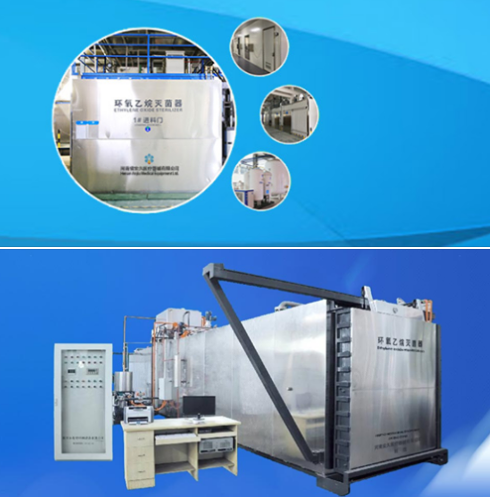Sterilization environment requirements
Items to be sterilized must be thoroughly cleaned, not with normal saline, and there should be no water droplets on the sterilized items to avoid dilution and hydrolysis of ethylene oxide. Ethylene oxide can be used for the sterilization of almost all medical supplies, but it is not suitable for the sterilization of food, liquids, oils and fats, talc and animal feed. Paper, composite dialysis paper, cloth, non-woven fabric, ventilated rigid container, polyethylene and other packaging materials can be sterilized with ethylene oxide; metal foil, polyvinyl chloride, cellophane, nylon, polyester, polyvinylidene Vinyl chloride, impermeable polypropylene cannot be sterilized with ethylene oxide.
Use features:
1. Within a certain range, the increase in temperature and concentration can shorten the sterilization time. The temperature, concentration and time parameters must be reasonably selected when using ethylene oxide for sterilization.
2. Control the relative humidity of the sterilization environment and the water content of the articles: the water content of the bacteria itself and the water content of the sterilized articles have a significant impact on the sterilization effect of ethylene oxide. In general, the best relative humidity is 60%~80%. Too little water content will affect the penetration of ethylene oxide and the alkylation of ethylene oxide, reducing its sterilization ability; too much water content, ethylene oxide will be diluted and hydrolyzed, which will also affect the sterilization effect. In order to achieve the ideal humidity level, the first step is that the sterilized object must be pre-wetted first. Generally, the sterilized object is required to be placed in an environmental condition of 50% relative humidity for at least 2 hours; in the second step, a humidification device can be used to ensure the ideal humidity in the cabinet. Level.
3. Pay attention to the influence of the protective material outside the bacteria on the sterilization effect: the more organic matter on the surface of the bacteria, the more difficult it is to kill; the organic matter can not only affect the penetration of ethylene oxide, but also consume part of the ethylene oxide. Microorganisms in inorganic salts or organic crystals are difficult to kill with ethylene oxide. Therefore, before performing
ethylene oxide sterilization, the organic and inorganic dirt on the articles must be fully cleaned to ensure the successful sterilization.
High quality eo sterilizer, any need please email to
[email protected]
